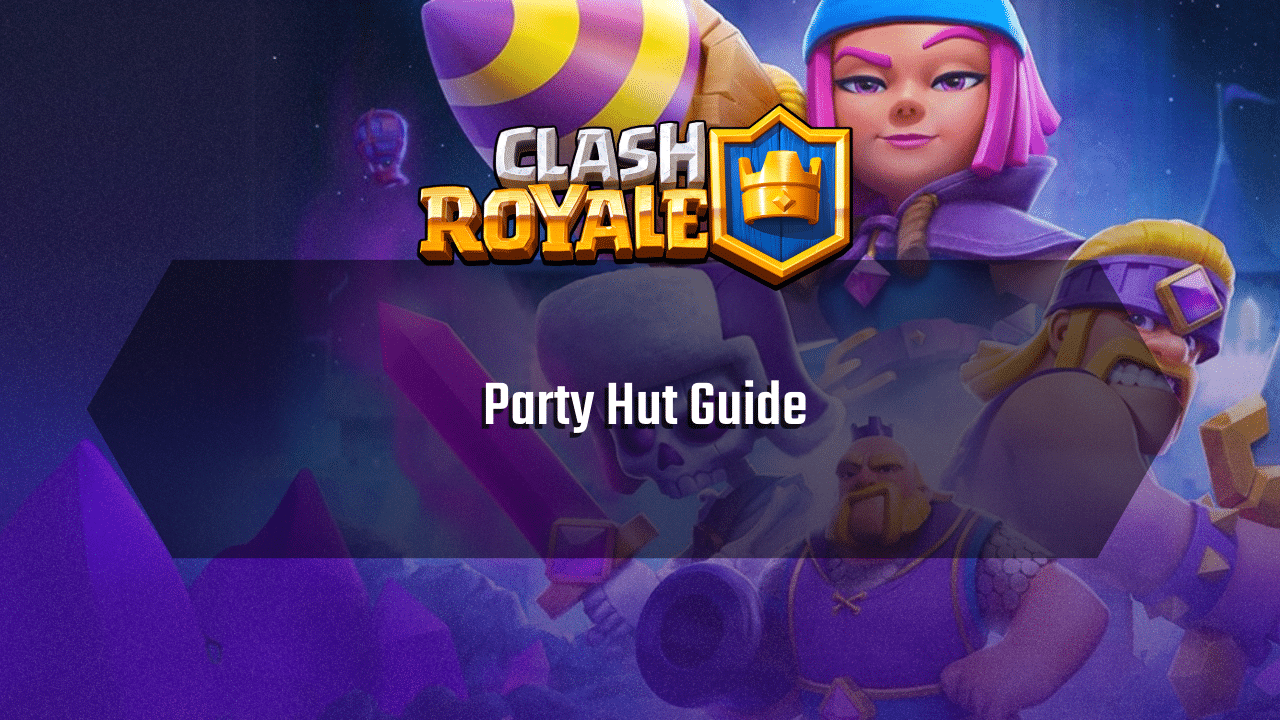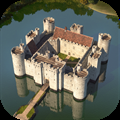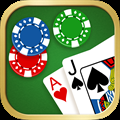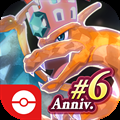
Introduction to the Party Hut
The Clash Royale Party Hut is a unique event-exclusive Legendary card, available during specific challenges like the Goblin Party Hut challenge and the Super Cards Draft challenge. Deploying the Party Hut costs 5 Elixir, and it functions as a building that spawns Spear Goblins. Atop the Party Hut, there is a Dart Goblin capable of attacking both ground and air troops. When the Party Hut is defeated or its hitpoints are depleted, it spawns 3 Goblins, 3 Spear Goblins, and a Goblin Brawler. The building has a 1.5-second deployment time.
In the Super Cards Draft challenge, where all cards are set to level 11, the Party Hut has 851 hitpoints, with the Dart Goblin dealing 131 damage. It spawns 3 Spear Goblins, 3 Goblins, and 1 Goblin Brawler, all at the same level as the Party Hut.
The Dart Goblin on the Party Hut has a unique targeting mechanic. Unlike the X-Bow, it cannot attack the opponent’s Princess Tower unless the Party Hut is positioned near the bridge and directly faced toward the tower. As a result, its targeting range for towers is slightly shorter compared to the X-Bow.
Strategies for Using the Party Hut
A highly effective strategy for using the Party Hut in Clash Royale is through aggressive spamming, particularly when combined with the Mirror card. The Party Hut is cost-efficient and challenging for opponents to eliminate quickly, making it ideal for frequent deployment, especially when mirrored. The key is to cycle back to the Party Hut and Mirror using low-cost cards like Skeletons, Fire Spirit, and Electro Spirit. It’s crucial to be the first to drop the Party Hut, and it’s advised to avoid deploying it unless the Mirror card is available to maximize its potential. This “two-card cycle” of Party Hut and Mirror, supported by low-cost cycling cards, can create significant pressure and overwhelm the opponent.
For optimal use, consider building decks with a low average elixir cost to allow for more frequent deployment of the Party Hut, thereby maximizing the number of troops it spawns. The Party Hut is also valuable for defensive purposes, particularly against enemy pushes. It excels at distracting and damaging large tanks like Golem and PEKKA. Building-targeting units like Hog Rider, Giant, and Balloon are generally unable to defeat it, even at full health.
Additionally, it can effectively counter Super Mini PEKKA by spawning Goblins that quickly take it down. However, it’s best not to use the Party Hut against Super Cards like Super Lava Hound or Super Magic Archer. In situations where the opponent deploys a Party Hut first, consider using your own Party Hut defensively.
To enhance the Party Hut’s effectiveness, take advantage of the waves of spawned troops—Goblins, Spear Goblins, and Goblin Brawlers—that emerge when the Party Hut is destroyed or expires. These troops can apply pressure on the opponent’s towers while also providing additional defensive support.
Card synergies play an important role in maximizing the Party Hut’s potential. Bowler is often recommended due to its ability to handle swarms and the Goblin Brawler that spawns from the destroyed Hut. Some players even pair it with a “pure cycle deck” featuring low-cost cycling cards. Dark Prince is another strong option, offering splash damage to support pushes created by the Party Hut and its spawned Goblins. Evolution Skeletons are useful for cheap cycling to return to the Party Hut and Mirror, and they also serve as distractions or additional defense.
Earthquake is effective for countering opposing Party Huts and other buildings, while providing chip damage. Log is valuable for clearing the swarms of Goblins and Spear Goblins that spawn upon the Hut’s destruction and can also be used against an opposing Party Hut. Low-cost cycle cards like Electro Spirit, Fire Spirit, Ice Spirit, and Skeletons are essential for quickly cycling back to key cards like Party Hut and Mirror. A suggested deck composition includes three one-cost cards along with Party Hut, Mirror, Bowler, Earthquake, and Log to maintain a fast cycle.
Additionally, Princess Tower or Dagger Duchess can provide ranged support, with Dagger Duchess being particularly effective against Spear Goblins. The Monk is useful for reflecting attacks aimed at the Party Hut, extending its lifespan. Some decks even include Rocket for targeting high-value units or securing critical damage.
For countering the opponent’s strategies, cards like Goblin Curse and Earthquake are recommended, although Log is considered more effective by some, as it can clear both the Goblin Party Hut and the Goblins that spawn, while Goblin Curse is vulnerable to Bowler and Log.
In summary, the most potent strategies for using the Party Hut focus on aggressive mirroring and maintaining a fast cycle with low-cost support cards. By leveraging its high health and the continuous waves of spawned troops, the Party Hut can overwhelm opponents, especially in event challenges where it is featured. While it can be used defensively, its offensive capabilities, particularly when spammed, are a key factor in its effectiveness.
Strategies for Countering the Party Hut
When it comes to countering the Party Hut in Clash Royale, one of the most effective options is the Bowler. The Bowler’s high hitpoints allow it to withstand the Dart Goblin’s attacks, and its piercing attack can destroy the Party Hut while also dealing with the spawned Goblins, Spear Goblins, and even the Goblin Brawler. This interaction typically results in a neutral Elixir trade but sets up a good opportunity for a counterattack.
Another solid counter is the Log, which is useful for eliminating the swarms of Goblins and Spear Goblins that appear when the Party Hut is destroyed. The Log can also clear out the spawned Goblins from an opponent’s Party Hut, making it an efficient way to handle the card. In situations where the Party Hut is placed defensively by an opponent, Earthquake is a strong option, as it damages the building itself and any nearby troops. Earthquake is especially effective when combined with other cards like Bowler for a coordinated counter.
The Executioner also serves as a good counter due to its range and area damage, allowing it to target the Party Hut and the spawned troops at the same time, much like the Bowler. Although the Party Hut can hold its own against many building-targeting units, it is not recommended to use it against Super Cards, such as the Super Lava Hound or Super Magic Archer, which can overpower the Party Hut’s defenses. Additionally, a Wizard Trio can destroy a poorly positioned Party Hut by targeting both the building and the spawned troops.
For opponents who heavily rely on spamming the Party Hut, Bowler is often the only true hard counter available in the game. While other support cards might not be as effective, using a fast cycle deck with reliable counters like Bowler, Log, and Earthquake is key to keeping up with the pressure and preventing being overwhelmed by constant waves of Goblins and the Party Hut itself.
In summary, the most effective ways to counter the Party Hut revolve around cards that can either endure its attacks and eliminate the spawned troops simultaneously, like the Bowler and Executioner, or cards that can efficiently handle the waves of Goblins, such as the Log and Earthquake. Maintaining a deck with at least one of these counters and a decent cycle is essential for dealing with the Party Hut effectively.
Deck Example
Creating a strong Party Hut deck revolves around building synergy around spamming and maximizing Elixir efficiency. The goal is to create constant pressure with the Party Hut while managing your Elixir and countering enemy threats effectively. Below is an example of a well-rounded deck that complements the Party Hut’s strengths:
Party Hut – The core of the deck, used for spawning Goblins, Spear Goblins, and Goblin Brawlers. It is a great way to apply pressure and defend.
Mirror – Essential for doubling the Party Hut’s presence, creating constant waves of spawned troops. The Mirror increases the pressure, forcing your opponent to deal with multiple Party Huts at once.
Skeletons – A low-cost cycle card that helps you quickly return to your key cards (Party Hut and Mirror). It’s also useful for distracting enemy troops or tanks.
Electro Spirit – Another low-cost cycle card that can deal with swarms of troops and help reset Sparky or Inferno Tower, as well as stun enemies and help with controlling enemy pushes.
Log – A powerful spell that clears out swarms of Goblins, Spear Goblins, and other small troops that spawn from the Party Hut. It’s also useful for resetting charges from enemies like Hog Rider or Prince.
Bowler – A solid counter to swarms and a primary defender against enemies that are trying to deal with your Party Hut. The Bowler’s rolling boulder can clear out spawned Goblins and Spear Goblins and deal with larger pushes.
Earthquake – A great spell to deal with buildings and clear out defensive structures like enemy Party Huts or defensive buildings. It’s also useful for chipping away at enemy towers, especially when you need a bit of extra damage during a push.
Dark Prince – A great splash damage troop that can help support your Party Hut spawns. The Dark Prince is especially useful for dealing with swarms or charging troops like Hog Rider or Golem.
This deck capitalizes on the Party Hut’s ability to create constant pressure while also having versatile defensive tools. Combining the Mirror with low-cost cards and high-value counters like Bowler and Log makes this deck a powerful and effective Party Hut deck in challenges and competitive play.
Advanced Strategies
Mastering the Party Hut in Clash Royale requires more than just basic spamming; advanced strategies focus on precise timing, Elixir management, and tactical deck composition. One key to success is perfecting the Party Hut and Mirror cycle. The goal is to always have Mirror available when deploying the Party Hut offensively, ensuring that you can immediately double down on pressure.
A fast, efficient three-card cycle using low-cost cards like Skeletons, Fire Spirit, and Electro Spirit is essential for quickly returning to the Party Hut and Mirror combo. Pay attention to your opponent’s Elixir and card cycle to anticipate their counters, and begin the cycle with Mirror to maximize offensive pressure.
When building your deck, consider how it will handle common counters and create synergistic pushes. For example, if your opponent uses swarms to counter the spawned Goblins, Bowler is a great choice to clear them out. Earthquake is crucial against decks that use buildings, including opposing Party Huts or defensive structures, and should be used for both building damage and chip damage to towers. Log is versatile—not only clearing spawned Goblins but also resetting charging troops or finishing off low-health towers. Including a Rocket can be an effective surprise win condition or a way to eliminate troublesome counters that might pose a challenge for your ground troops.
Adaptive Party Hut placement is another important strategy. While placing it aggressively at the bridge is common, more advanced players adjust their placement based on the game state. A defensive placement within your own territory can absorb damage and divert enemy troops, especially against single-target attackers. Additionally, slightly offsetting the Party Hut can influence where enemy troops are deployed, offering a tactical advantage for your support cards. Be mindful of placement restrictions near the bridge, as they can affect the Dart Goblin’s ability to target the tower effectively.
The spawned troops from the Party Hut’s destruction are valuable for both diversion and pressure. Use the Goblins, Spear Goblins, and Goblin Brawler to split push, forcing your opponent to divide their defenses. They can also serve as a meat shield for more vulnerable troops or absorb tower shots while your mirrored Party Hut continues to apply pressure. The Goblin Brawler is particularly potent, often landing hits on the tower if left unchecked.
Experienced players anticipate common counters like Bowler, Log, and Earthquake and adjust their strategies accordingly. If facing a Bowler, consider splitting your pushes to make it harder for a single Bowler to handle everything. After your opponent uses their Log to clear the initial Goblin spawn, quickly deploy additional threats to capitalize on their wasted Elixir. When dealing with Earthquake, spacing your Party Huts out can reduce the value your opponent gains from hitting both with a single spell.
Advanced cycling techniques are also important. While the three one-Elixir card cycle is key, sometimes it’s better to cycle slightly slower to keep essential defensive cards in hand, especially if you’re facing a strong early push. Mind games with the Mirror can also be effective—holding off on mirroring immediately can bait out an opponent’s counter prematurely, allowing you to capitalize on their wasted Elixir later in the match.
If your deck includes Evolution cards, think about how they can complement the Party Hut strategy. For example, Bats Evolution adds aerial pressure, particularly useful in a bait-style deck, while Evolved Skeletons provide extra cycling and defensive capabilities, improving your overall deck efficiency.
By mastering these advanced strategies, you can significantly enhance your effectiveness with the Party Hut, making you a formidable player in challenges where it is featured.
Conclusion
In conclusion, the Party Hut stands out as a remarkably strong card, especially in challenges like the Goblin Party Hut challenge. The core strategy revolves around aggressively spamming the Party Hut, often with the Mirror card to double down on pressure and overwhelm the opponent with continuous waves of Goblins, Spear Goblins, and Goblin Brawlers. This strategy aims to exploit the high Elixir cost required for opponents to counter the Hut effectively.
A crucial aspect of the Party Hut strategy is spamming with Mirror. To maximize the pressure, you should consistently place the Party Hut and mirror it as soon as possible to keep the constant wave of spawned troops flowing. Fast cycling is also essential, which means using a deck with a low average Elixir cost and incorporating several one-Elixir cards, such as Skeletons, Fire Spirit, and Electro Spirit, to quickly cycle back to the Party Hut and Mirror combo. This fast cycle helps maintain pressure on the opponent and keeps the offensive momentum going.
While the Party Hut is strong offensively, it has counters, with Bowler being a primary one. The Bowler’s high hitpoints allow it to survive the Dart Goblin’s attacks, and its area damage can effectively clear the Goblins and Spear Goblins that spawn from the Party Hut. Players using the Party Hut strategy should be prepared to face Bowler and plan accordingly. Supporting spells like the Log and Earthquake also play vital roles. The Log is invaluable for clearing swarms of Goblins, while Earthquake can damage the Party Hut itself and help control surrounding troops. Both can be used defensively and offensively, complementing the Party Hut’s relentless pressure.
In terms of deck composition, while the Party Hut and Mirror cycle form the backbone of the strategy, it’s important to include cards that address potential counters and add versatility. Cards with splash damage or defensive utility, like Dark Prince, Princess, and Monk, can help deal with enemy pushes or support the Party Hut’s offense.
Finally, mind games and timing are crucial for advanced play. Knowing when to place the Party Hut, when to Mirror, and how to anticipate your opponent’s responses is key. Spamming without considering the opponent’s Elixir and card cycle can leave you vulnerable to counterattacks. Success with the Party Hut often hinges on maintaining relentless pressure while skillfully using supporting cards to neutralize or outplay common counters.
Ultimately, when combined with Mirror and a fast cycle, the Party Hut creates relentless offensive pressure that can be difficult for opponents to handle cost-effectively. Mastering this strategy involves consistently spamming the Party Hut, managing Elixir efficiently, and countering or outplaying any potential threats from the opponent.













